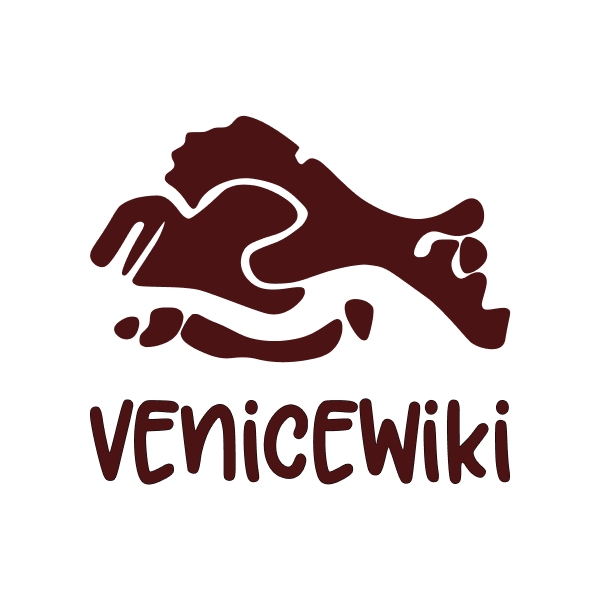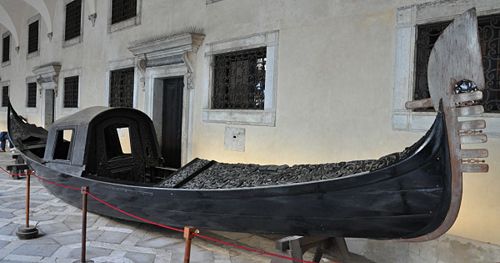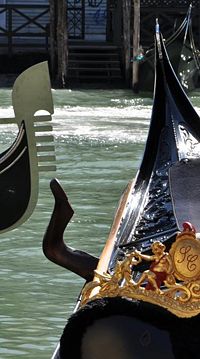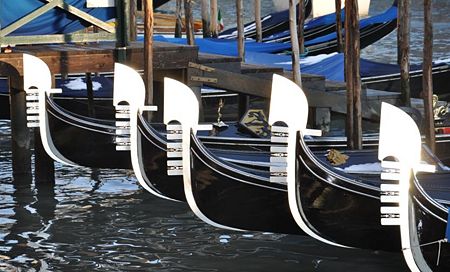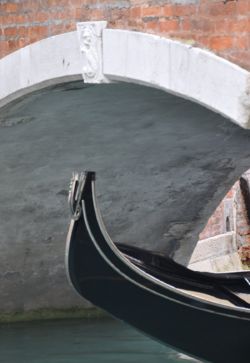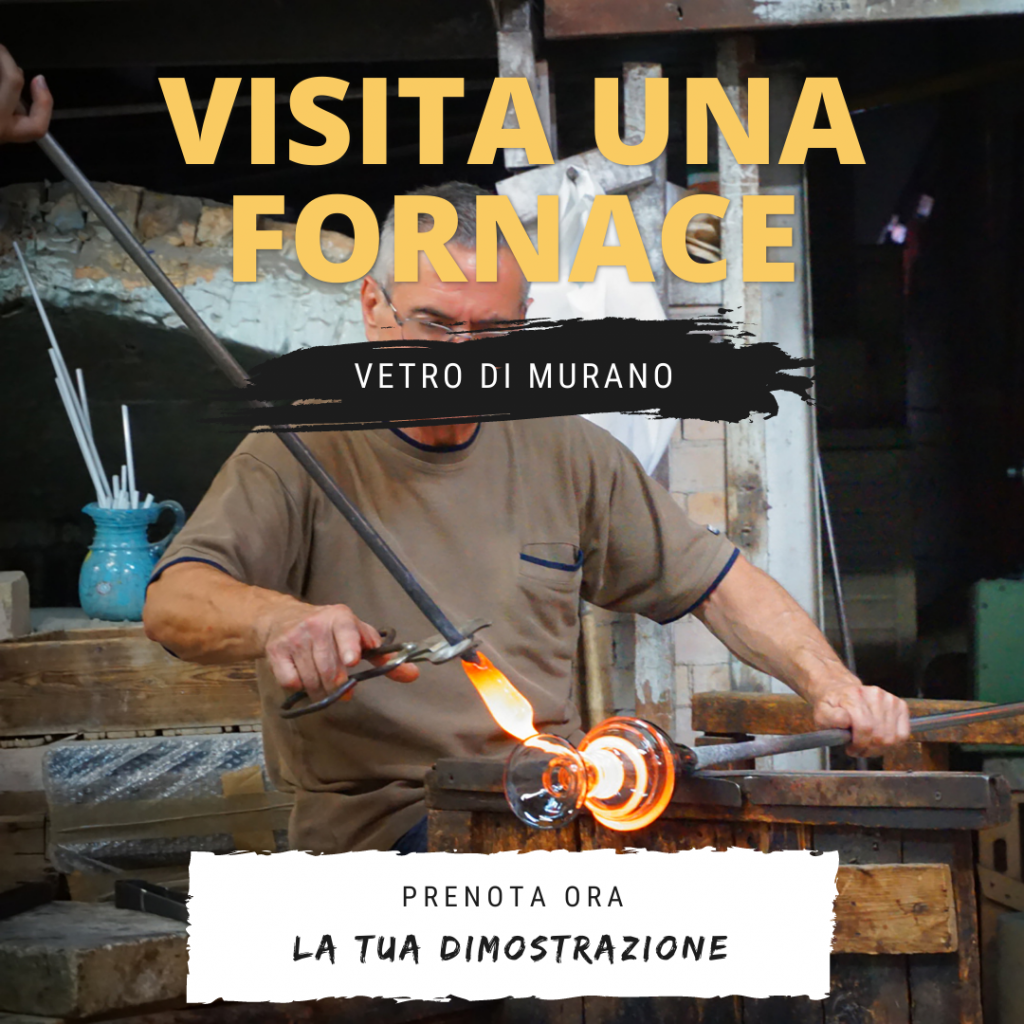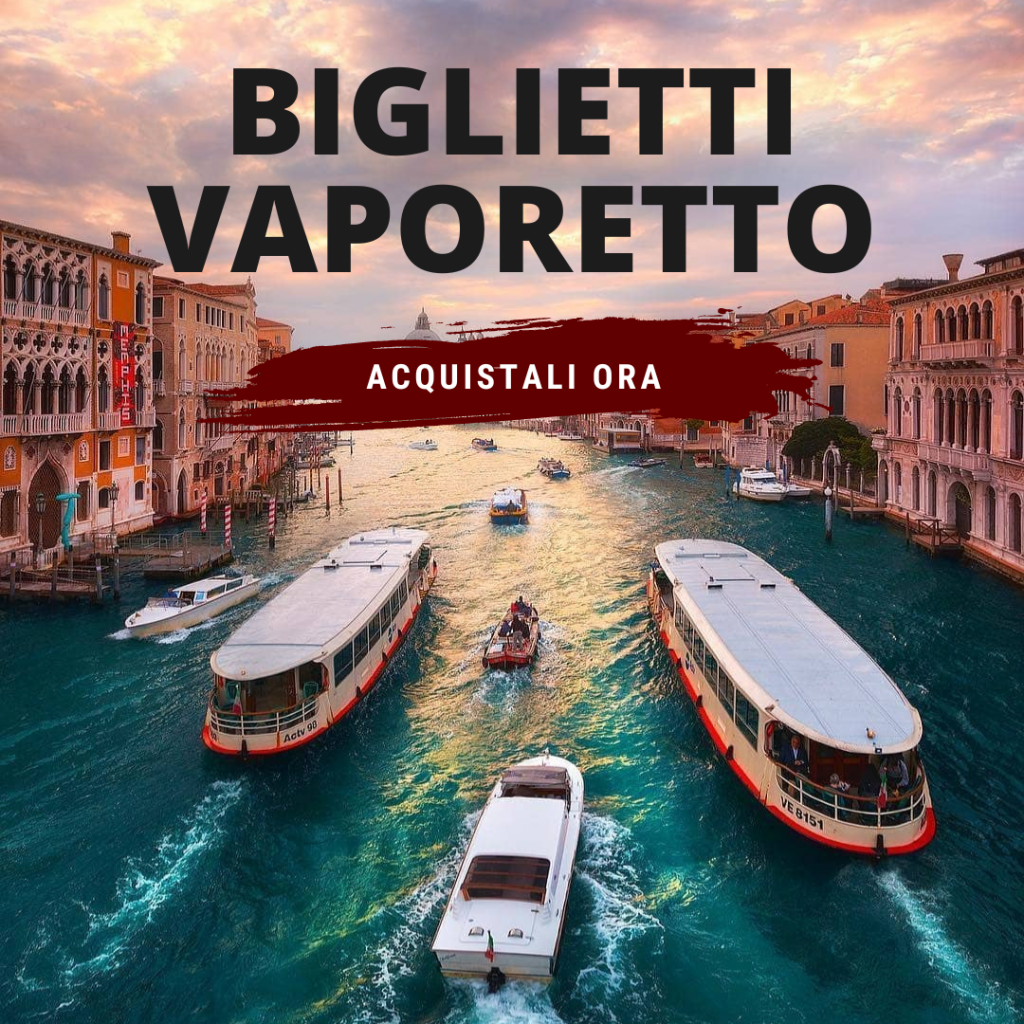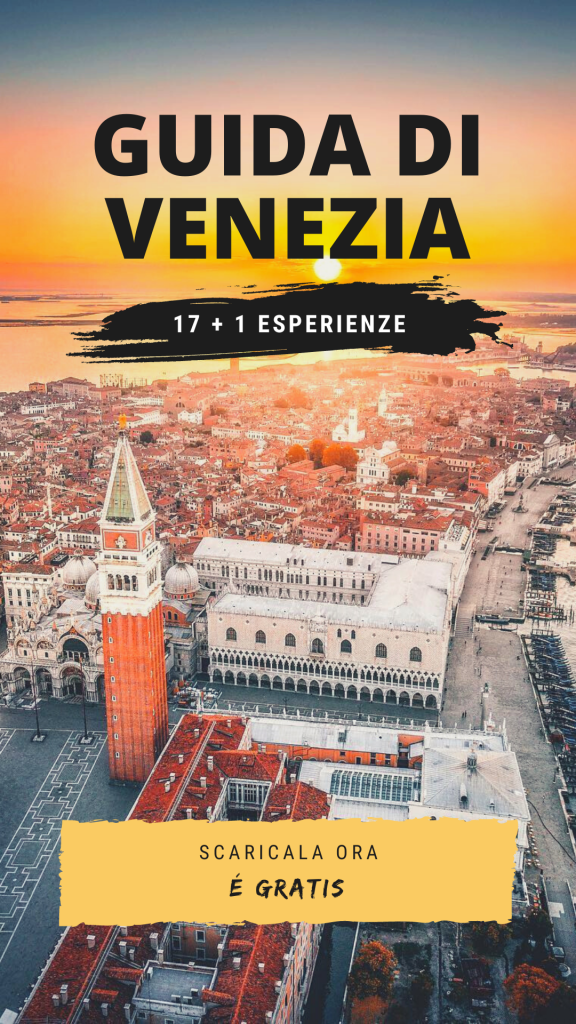Venetian Gondola
Description
The gondola, the long black boat that moves sinuously in the canals of Venice, is one of the oldest symbols of Venice, famous throughout the world.
Enjoying the Gondola’ Ride is a dream for all the tourists who visit the city and for the Venetians, too. The brides do decorate the Venetian Gondola to party with white flowers, are accompanied by two handsome gondoliers dressed in white with a belt of sea bream and rise envied by her friends for the most beautiful location on the Grand Canal, which will bring the bride to the altar and the nuptial bed.
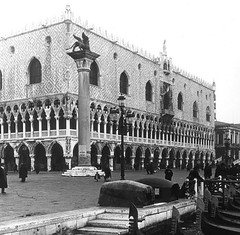
The origin of the name is yet to be determined. The most credible version indicates that cymbula derives from the Latin, which means litle boat, but other sources indicate the origin in the Greek words kondùlion which indicates a cash or ill suited kountelàs indicates that a ship short.
Of course, the origin does not affect the popularity of the craft, although the oldest form of gondola was very different from today and only innovation and change have changed and improved a lot the technical characteristics and the lightness of the lines that make it a dream in the collective imagination.
11 meters long, 1.40 wide and 0.65 high about, has an asymmetrical shape in the longitudinal axis, the one that runs through the boat from bow to stern, with a deviation of about 24cm to the right than the left. This allows the gondolier to more easily maneuver the boat, to compensate for the deviation, having to stand on the transom moved up on the left side, with a special crutch, the Forcola.
Since the dawn of the city as you move from island to island on boats that were made to the need for navigation in shallow lagoon waters, had to have a flat bottom to have less draft. An ancient chronicler wrote that the habitants of the lagoon islands had the boat tied up out of the houses as the horses in the homes of the mainland.
For more necessary that the driver could look ahead to avoid going to slam on floating logs or on the banks emerged Barene. For even improve thrust and have more control, the inhabitants of Barene had a particular technique of rowing with two oars, this technique is referred to the note valesana mode.
The Voga Veneta, rowing standing in the back of the boat, by Pope with the help of special oarlocks scarcely paralleled anywhere else in the world, Forcole, then becomes a need for Venetians.
Before she could get the gondola as we see it today it took centuries of changes and improvements in boat building that symbolizes more than any other Venice. It was the most comfortable boat that exist for passenger transport in the lagoon. On the central part, where are the seats during the cold season, was covered with a special cab, Felze (you can see in this photo taken apart in front of the old Doge’s Palace) , which allowed the insulation from the cold and also from the gondolier, having glass windows and a front door. The felze was completely covered by a cloth called rassa from turkish serge, which was produced in the vicinity of St. Mark’s in the street that is still Calle delle Rasse.
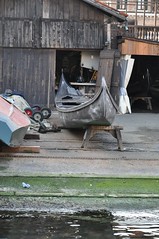
Over the centuries, the most glitz of the families of Venice in the sixteenth and seventeenth centuries, the gondolas in Venice were more than 10,000 and nobles vied with each other by decorating the boat with gold, stucco and bright colors, so that the Senate had intervene to stop this race to the luxury and ostentation of wealth, imposing black color for all gondolas with a decree dated October 8, 1562.
The gondolas were built on sites scattered throughout the city, the so-called Squeri. Were places in which there was a ramp out of the water from which it could easily launch or bring dry the boat when water wascoming in, that is, when the wood, not more welded together, began to filter in water inside the boat. The most famous, because it’s easier to see from the foundation side, and is currently still operating as a few others is the Squero di San Trovaso. Not very far, but more hidden, is the squero of D.co Tramontin, famous throughout the world for its beauty and longevity of its gondolas.
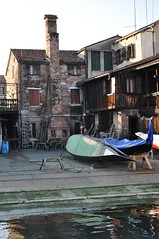
To build a Gondola is necessary to use different types of wood in relation to the position of the wood and its behavior in relation to other woods. Is used oak due to its hardness in the construction of your hips, the more prone to strokes with other boats or on the shore , the trasto to the bottom of why light and helps the smoothness of vessel, the cherry for contrasts hard and resistant to stress because of the weight, ( the contrast is the cross that combines the two bands in the bow, the place from which you go by boat ), the larch due to its resistance to water , the linden to building succhetto , the position of the gondolier at the stern, subject to constant friction and wear , the walnut due to its flexibility in the construction of the frames ( it is shaped by heating with fire after having plenty of wet , heating up the part that is cake and scope, patiently , to have the shape) , the elm to the ribs of the structure, and finally the mahogany becomes homogeneous along the structure, aggregating the other woods.
Once the wooden construction of the Gondola is appropriately decorated, and each gondolier has the opportunity to decorate their own gondola with special embellishments and accessories.
Some nacelles have the transom carved or painted, others have the brass is beside the chair on which Faral, the light on top for moving by night, the seats are precious fabrics and pillow cover that is soft and colorful, not to mention the Forcola and row, essential for the government of the gondola and must be constructed in relation to the height of the person who has to use, the its weight, the force he uses to proceed with the boat, in a word, custom the gondolier.
An association was created to unite all of the components of the filmmakers Gondola’. El Felze is his name and associates’ ‘squerariòli and remeri, otonèri and Fravi, intagiadòri and indoradòri and then again’ ‘Marangoni and tapesièri, Bareteri, Calegheri and tailors ‘ ‘.
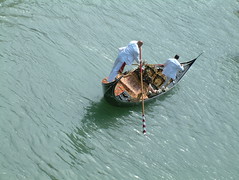
Just because the symbol of the city Gondola is also sought for all events that are to highlight the Venetian event, in so many races can not miss gondolas and gondoliers private that join the marches. During the Historical Regatta gondolas lead the procession carrying the most important offices, civil and ecclesiastical, ambassadors and princes of other states, but their use is not exclusive to romantic serenades and festively decorated is the dream of every bride Venetian who, with long white veil, the gondoliers clothes from parada, gilded armchairs and groom side, reach the maximum of happiness along the Grand Canal knowing that all eyes are directed at them.
The gondola’s iron
The gondola’s iron is the very essence of the city of Venice.
Of great importance and essential for the stability of the boat, is fitted to balance the weight of the gondolier at the stern, but he shapes and designs that evoke the peculiarities blinds.
The shape of the iron has been studied in detail so that it can focus on a single object, even if part of a specific entity and specifying the context of a well-known internationally, the socio-political structure of the city, the geographical distribution, with all its specific parts without forgetting even the smallest as well as the legal form of the state of the Republic of Venice.
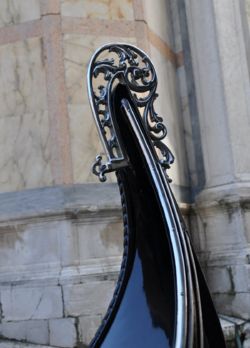
Starting at the top of the gondola iron is distinctly recognizes the form a Horn Dukes, also known as zoia or Zogia, the Doge’s hat, which was the symbol of the head of city government since from the birth of the city. Below, before the Rostra, a bow for many symbolizes the Rialto’s Bridge.
The six bolts that are aligned in succession on the front indicate the geographical division of the city with its six districts (districts precisely because you are not neighborhoods like those of the Roman memory, which divided the Roman camp in four parts). San Marco, Castello, Cannaregio, Dorsoduro, Santa Croce and San Polo, which in turn were divided into ‘de citra‘ the first three, and ‘de ultra‘ the second, in relation to their position on this side or that side of the Grand Canal.
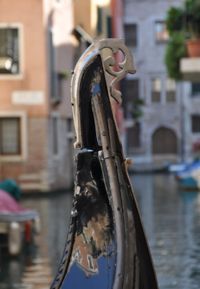
Among the front bolts, interspersed with three small forms as if they were lace, the gondoliers the call leaves indicate the three largest islands of the Venetian, Murano, Burano, Torcello , locations of important and fundamental landmarks of the city.
Last, but not least, the Giudecca or Spinalonga, which for its geographical position is indicated in the iron from the gondola in the rear, which stands out because only the outer part of a curved line, which from the top of the Horn Duke arrives, like a sinuous wave, to caress the water and merge into one with the boat.
The Ferro da Pope is instead a small sprout which demonstrates the sophistication of the builders of Gondolas. One such example. The curl back, or da pope, on some gondolas, being the high point of Piau Gondola is partially cut to allow the transit under the bridges even in High Tide. In this case, the hedgehog leans on a pin and not strip under the bridges during the transit of the gondola. Obviously the Gondolier must fall under certain conditions even lie down on the mirror by pope, keeping a hand with the handling of the boat.
Testo basato sull’originale di
